Medina & Athena: A Eurabian Restoration
In which Yours Truly Dictates Shaykh Hamza Yusuf's Brilliant Essay!
A monument in the heart of the Eurabian Caliphate, blending the architectural styles of ancient Greek and Islamic art. The structure features columns reminiscent of the Parthenon, intertwined with the arches and domes typical of Islamic architecture. The monument is a symbol of peace and intellectual unity, surrounded by a garden where scholars and students engage in animated discussions about philosophy, science, and art.
So far, in this Project Eurabia series, Yours Truly has gone over primarily the political, ideological & socioeconomic side of things. In the very first entry, we examined how Eurabia is not something to fear, but rather something to celebrate:
Afterward, we read Shaykh Abdal Hakim Murad’s excellent essay, which analyzed the Migration issue. Particularly, it went over all the ways in which a Future Eurabia (bolstered by Muslim fertility) can be a positive force for its citizenry & the wider Global Community:
Finally, we then turned our attention to Imam Zaid Shakir’s classic from several years ago, which outlines where Nationalism & Islam part ways. As we read said essay aloud, emphasis was made by Imam Zaid time & again on how the Caliphate cannot wed itself to Modernity:
Presently then, we stand at an interesting place with this Project Eurabia series:
We have demonstrated that Eurabia will be primarily a post-national entity, akin more to the notion of Empire that is the hallmark of Tsardoms, Caliphates, etc, of ages past.
This Eurabia will be multi-ethnic, but not a ‘melting pot’ which seeks to turn its citizenry (both individuals & groups) into ‘consumer man,’ that ubiquitous cog prevalent in much of the Capitalist West, & coming in various guises in America & its sundry vassals.
This Eurabia will also be one that eschews the notion of ‘borders,’ in favour of a concept more akin to the American notion of ‘frontier,’ thereby seeking to interact with the other Civilization States of the World in a manner similar to Caliphates of the past.
What we have not done (as of yet) is describe the more subtler notions prevalent in this Future Eurabia. It’s one thing to speak about a series of Future Boons & characteristics, it’s another thing entirely to speak about the temperament & character of its citizenry.
What follows is an essay that does just that, Dear Listeners & Readers!
The Eminent Shaykh Hamza Yusuf serves as president of Zaytuna College. In addition to teaching several subjects in Zaytuna’s curriculum, he has authored encyclopedia entries, academic papers, and articles on Muslim bioethics, legal theory, abortion, and many other topics. His books and translations include The Content of Character: Ethical Sayings of the Prophet Muhammad; The Prayer of the Oppressed; The Creed of Imam al-Tahawi; Purification of the Heart: Signs, Symptoms, and Cures of the Spiritual Diseases of the Heart; and Caesarean Moon Births: Calculations, Moon Sighting, and the Prophetic Way. He is a member of the Supreme Fatwa Council serving under his mentor, Shaykh Abdallah b. Bayyah, and serves as vice president for the Forum for Promoting Peace in Muslim Societies, an international initiative which seeks to address the root causes that can lead to radicalism and militancy. He holds licentia docendi in several Islamic subjects, a BA in Religious Studies, and a PhD in North and West African intellectual history.
In his essay ‘Medina and Athena: Restoring a Lost Legacy,’ he unravels the common commitment that Muslims & Westerners, once upon a time, shared regarding the Humanities:
This marriage between Medina & Athena synthesized the Greek Heritage of Reason & Philosophy (i.e. Wisdoms of the World ) with the Heritage of the Islamic world, Theocentric in character & directed toward the Hereafter & the Next World.
Yet it is precisely because this relationship has broken down over the past few centuries or so, courtesy of Modernity & its various bitter fruits, that the World presently finds itself in Crisis & likewise on the precipice of Total Destruction & Armageddon.
A Future Eurabia should once more endeavour to be a beacon for this now-lost synthesis, whereby pedagogically, it inculcates into its citizenry a healthy & vibrant fondness & zeal for these subjects & their studies, which were once central to the personal inculcation of virtue.
Modernity’s sundry maladies will not be overturned overnight. Ideologies & their sundry ‘saviours’ run amok in the West ( & beyond ), trying to hoodwink the common people with their enticing (yet nevertheless fatal) promises of a ‘better tomorrow:’
Modernity’s saviours are False & Dangerous:
To eschew them is to be Human, & to partake in their delusions is to shed one’s Humanity & become something Vile & Grotesque; Repugnant to all sane Men.
The path ahead is long & arduous, but Inshallah, one that a Future Eurabian Polity ( Ummatic in character & faithful to this long-lost legacy ), can revive & restore.
I have linked the original Essay above for those willing to read it at Renovatio: The Journal of Zaytuna College instead. Please check them out for all the excellent work they have put out, Dear Listeners & Readers! I guarantee that it will be time well spent!
The essay is excellent, & it goes over why Muslims in the West ( & beyond! ) ought to once more Restore this once flourishing relationship, & why the pedagogical bounties to a declining West & a rising Islamic world, warrant such a confluence!
Without any further adieu, here is the full text of the essay mentioned earlier!
Medina & Athena
Restoring a Lost Legacy
Published June 10 (2019) at Renovatio: The Journal of Zaytuna College
Bazar of Athens when Greece was under the Ottoman empire, Edward Dodwell, 1821
The term liberal arts has become increasingly ambiguous due to the disparate ideas and images it evokes among educated people. An important failing of modern education lies in its inabilities to draw distinctions and to define terms, both of which have long been obsessions of the scholastic mind. In logic, we are taught that we can arrive at a definition only through an understanding of the genus and its difference from others in the same genus. The genus of the liberal arts falls under the rubric of education. But what differentiates a liberal education from others in order for us to arrive at the definition of the species of liberal education? The distinction resides in the word liberal, which juxtaposes and contrasts it with a servile education. These terms come out of a premodern understanding of societies and their hierarchical structures. A liberal education was given to freemen, as opposed to the vocational training given to the servants and slaves that taught them utilitarian skills, so they could provide the goods and services society needed. Such skills and crafts could be learned through apprenticeship and did not require the rigorous training of the mind.
A liberal education in the premodern period prepared a student for three essential occupations: theologian, lawyer, and physician. The theologian was the doctor of the ills of the immaterial body, the lawyer of the ills of the social body, and the physician of the ills of the physical body. Thus, a society, through a liberally educated elite, had trained minds to tend to the ailments of these three aspects of life on earth: the moral and spiritual life of the soul; the social, commercial, and political life of men living together; and the healthy life of the physical body necessary to enjoy the other two aspects of their lives.
The seven liberal arts divide the world into spirit and matter, quality and quantity, soul and body. An educated person achieved competency in both the life of the mind and the life of matter. The qualitative studies involved the spoken language of literature, especially poetry; the thought processes of the mind that conceptualize, judge, and reason; and the development of an aesthetic sense necessary to effectively persuade, praise, accuse, or defend. The quantitative studies focused on the mysteries of numbers through a mastery of arithmetic and geometry and applying them to music as numbers in time, and then to the supernal world as numbers in time and space.
This holistic approach to education cultivated a mind open to wonderment and a mind reverential to the harmony of creation. The roots of this form of education can be traced back to the mystery religions of Egypt, Babylon, and Greece; its greatest development emerged in the Jewish, Christian, and Muslim civilizations, which embraced these qualitative and quantitative arts to better understand their respective scriptures and the physical world around them. The Muslims considered the revealed books to take two forms: those embodied in the actual words of God, found in the Torah, Psalms, Gospels, and Qur’an, and those found in the book of nature. The first was studied with the tools of the trivium, and the second with the sciences of the quadrivium.
In his useful book Learning to Flourish: A Philosophical Exploration of Liberal Education, Daniel R. DeNicola provides us with a beneficial taxonomy for the contested term of liberal arts. He presents five purposes of liberal education: the transmission of cultural inheritance across generations; self-actualization, leading to a normative individuality; understanding the world and the forces that shape one’s life; engagement with and action in the world; and the acquisition of the skills of learning. DeNicola admits that all five are “detectable simultaneously in most robust conceptions of liberal education.”
First we need to define those two words: education and liberal. A useful definition for the first comes from the nineteenth-century theologian Cardinal John Henry Newman, who in Discourse VI, about “The Idea of a University,” said, “Education is a high word; it is the preparation for knowledge, and it is the imparting of knowledge in proportion to that preparation.” Obviously, this definition begs the question “What exactly is knowledge?” The answer to that demands a good deal of thought, and the metaphysical assumptions imbedded in any given civilization determine their conception of what constitutes knowledge, so it is by no means a facile problem. Nevertheless, let it suffice us for now, as it serves as a common-sense understanding of education. As for the word liberal, Aristotle provides us with a definition in his Rhetoric: “Of possessions those rather are useful which bear fruit; those liberal, which tend to enjoyment. By fruitful, I mean, which yield revenue; by enjoyable, where nothing accrues of consequence beyond the using.”
A contemporary setting with Muslim scholars and students engaged in study and reflection, surrounded by texts and scriptures. The background can include a mosque with intricate geometric patterns and calligraphy, emphasizing the importance of knowledge and contemplation in Islamic tradition.
Thus, a liberal education involves the student acquiring the preparation for knowledge, and the teacher imparting that knowledge, based upon the student’s preparation at each stage, through the mechanism of scaffolding or apperception that is done for its own sake, and not for a means of sustenance. Once this is accomplished, real learning can begin; in other words, after a didactic phase, the real learning by intellectual midwifery, or the maieutic process, can begin. This way, we learn to live a fulfilling purposeful life rather than learn to earn a living.
In terms of preparation, I would like to offer an expression from Imam al-Juwaynī, the teacher of Islam’s greatest scholastic master, Imam al-Ghazālī, who lived in the eleventh century and later came to be considered the Aquinas of Islam. Imam al-Juwaynī states:
You cannot acquire knowledge without six elements; I will explain them with brevity:
A quick mind, zeal, a foreign land, an immense effort, a professor’s inspiration, and a long lifespan.
Interestingly, these couplets, which are found in many Muslim works, appear almost seventy years later in a slightly altered form in Latin by Bernard of Chartres, who says:
Mens humilis, stadium quaerendi, vita quieta, Scrutinium tacitum, paupertas, terra aliena.
This translates to “A humble mind, zeal for learning, a quiet life, silent investigation, poverty, a foreign land.”
Depiction of Socrates by thirteenth-century Seljuk illustrator
Civilizations rise out of foundational texts. Without Homer, the Athens of Solon or Pericles may never have existed, not to mention the Athens of Socrates, Plato, and Aristotle. The Bible enables a great Jewish tradition of scholarship to emerge, and when translated into Latin, it gives rise to a unique European Christianity. As Christians rediscover Athens, an extraordinary synthesis occurs that marries Athens and Jerusalem. Christianity and Hellenism are the spiritual basis of Western civilization, and centuries later, as these two traditions begin to wither from neglect and recede into the background, the loss of reason and revelation takes a greater and greater toll on the generations devoid of them, culminating in an evaporation of the immaterial glue that held the fabric of society together.
Beginning in the eighth century, the Islamic civilization runs parallel with the Western, and in many instances intersects profoundly with it. It is also bestowed, like Christian civilization, with a foundational text—the Qur’an—which at its heart is a call to knowledge, study, and devotion. The Qur’an mentions the word knowledge over one hundred times; the word think, or reflect, has sixty-eight mentions. The first word revealed to the Prophet Muĥammad ﷺ was “read.” The Prophet ﷺ said, “Seeking knowledge is incumbent upon every Muslim man and woman.” In one tradition, he states, “Seek knowledge, even unto China.”
It was during the life of the Prophet Muĥammad ﷺ that the seeds of the synthesis between Athena and Medina were planted. This was also the time of the reign of one of the most notable European popes: Gregory the Great, whose Gregorian mission to the pagan Anglo-Saxons of Britain would transform a wild Germanic people into one of the great learned peoples of the world. Deuteronomy 18:18 says, “We will raise a prophet [Muĥammad] like unto thee [Moses].” As an inheritor of the Mosaic tradition, the Prophet Muĥammad ﷺ initially wanted to align with the Jews of Medina, as he saw them as natural allies. While at first they proved supportive of him, with a few exceptions, they remained largely intransigent, failing to recognize their own prophesies in him. He then attempted an alliance with the Christians, and during the vast and devastating war that was raging in the region between the Greek Christians and the pagan Persians (who were allied with the Jews against the Christians), the Prophet ﷺ sided with the Greeks.
A. J. Arberry, a twentieth-century British scholar of Islam, correctly renders the thirtieth chapter in the Qur’an, “Rūm,” as “The Greeks.” His translation of the chapter’s opening lines says:
Alif Lam Mim
The Greeks have been vanquished
in the nearer part of the land;
and, after their vanquishing,
they shall be victors
in a few years.
To God belongs the Command
before and after,
and on that day the believers shall rejoice in
God’s help; God
Helps whomsoever He will; and
He is the All-mighty, the
All-compassionate.
The believers rejoiced in the victory of a people of the Bible over the pagan Persians. In a hadith related in the Kanz al-¢ummāl, the Prophet ﷺ said, “The Greeks are your friends, as long as good remains in the world.” He also said, “Wisdom [the great pursuit of the Greeks] is the lost vehicle of the believer; wherever he finds it, he has better right to it.”
The subsequent generations of Muslims absorbed Greek thought, and as its power began to overwhelm the lucid revelation of the Prophet’s Semitic truths, with their essential yet universal simplicity, and as the rationalists began to side with Athena (reason) over Medina (revelation), the Sunni response was to recognize the great good in Greek learning but to place restraints on its sovereignty through a rigorous methodology that preserved the authority of revelation in its own domain over reason, while asserting the authority of reason in its proper place. The synthesis that emerged acknowledged reason’s importance and place in the areas of natural science, mathematics, and metaphysics rooted in revelation but maintained the importance of revealed truths unknowable by reason alone. These were the two wings that enabled Muslim civilization to soar for centuries.
Westerner and Arab practicing geometry, fifteenth century
The pursuit of knowledge became a major obsession of the Muslim world. In his book Knowledge Triumphant, the Jewish historian Franz Rosenthal argues that the Islamic civilization is unique in history for having as its raison d’être the discovery, preservation, and transmission of knowledge. But the concept of knowledge included what a man believed, what he considered good or bad, and whether he had clear standards he was willing to live by. Hence, the idea of an education included moral, intellectual, and spiritual training.
In his book Arabic Thought and the Western World, Eugene A. Myers remarks about Imam al-Ghazālī that:
“His first contribution to Islam was to bring education into an organic relation with a profound ethical system. He taught that the material gains could not bring happiness without a moral and spiritual reawakening. Education must then not be limited to imparting knowledge; it must stimulate the moral consciousness of the individual.”
In the same book, Myers further reveals the immense influence Athens had on early Muslims, as the great classics of Greek science, mathematics, logic, and philosophy were translated during the period from 650 to 1000 CE. This historic translation movement, which included translations by many Arab Christians who had studied within the Byzantine tradition, introduces several texts that would transform the Muslim world considerably and also create many intellectual crises in the process.
Due to an intense reliance on the Qur’an and the Sunnah (the prophetic tradition), an emphasis on language studies highlights the overall educational direction. Grammar; lexicology; and the collection, study, and preservation of the rich and distinctive Jāhilī (pre-Islamic) poetry become mainstays of early Muslim curricula. Avicenna, who died in 1037, takes the corpus of Aristotle and writes The Shifā’, which is his own version of The Organon,with additions and departures from some of Aristotle’s conclusions. The Shifā’ becomes an important book not only in the Muslim East but in Western Europe, through its translation into Latin. Building upon The Shifā’, al-Ghazālī writes his influential Aims of the Philosophers, which explains in a simpler language the foundations of the Peripatetic tradition. The Shifā’emerges as a major influence on Jewish philosophical thought as well as on the Christian scholastic tradition. Al-Ghazālī then introduces logic—which has been central to the Islamic college curriculum—as a prerequisite for theology and jurisprudence. Arabic rhetoric develops in Central Asia and is added to grammar and logic in a triad of subjects, foundational to the Islamic tradition, that become known as the instrumental arts (al-¢ulūm al-ālah) and sometimes as the three arts (al-śinā¢āt al-thalāth). Thus, the trivium becomes fully incorporated into Muslim scholastic tradition. Grammar, however, remains the focus.
RENOVATIO: THE PODCAST EPISODE 12
Podcast: The Decline of Language and the Rise of Nothing with Hamza Yusuf and Thomas Hibbs
Islamic portrayal of Aristotle, circa 1220
In his singular book The Foundations of Grammar, Jonathan Owens cogently argues that the grammarians of Islam were closer to what we would today call linguists. They studied every aspect of language, including deeply philosophical problems related to language. Owens states that the eleventh- and twelfth-century Arabic scholars should be revisited by modern linguists, as he contends that the Orientalists of the nineteenth century were not equipped to understand many of the issues those scholars were writing about, because the science of linguistics, which is necessary to actually understand them, had not yet emerged.
Muslims developed grammar schools similar to the ones that emerged in the Western tradition, so for the first six or seven years of study, students memorized the Qur’an and learned grammar and diction. Vocabulary acquisition was done through highly ornate fictional stories, known as the maqāmāt. Students often memorized by rote the entire story and the explanatory notes on word definitions. The other element was quantitative studies of the quadrivium, known as the rational arts (al-¢ulūm al-¢aqliyyah).
A historical depiction of Thomas Aquinas and al-Ghazālī in a scholarly setting, surrounded by ancient manuscripts and scrolls. They are deeply engaged in a discussion, with the backdrop featuring symbols of Aristotle’s methods of reasoning and taxonomy. The scene can blend elements of both medieval European and Islamic scholarly environments, highlighting their shared intellectual heritage.
The Muslim and Western traditions clearly shared the commitment to the liberal arts. However, as Muslims developed greater emphasis on the religious sciences, the liberal arts elements necessary for a fully developed individual began to recede. Grammar studies still relied heavily on literature and poetry, but logic lost its edge as a result of the abandonment of material logic traditionally understood to be essential for a robust training in philosophy, theology, and critical thinking. Rhetoric continued to be taught to a high degree, but the spatial arts of the quadrivium languished and eventually disappeared from religious training.
Aquinas, like al-Ghazālī before him, recognized the great worth of systematic philosophy that naturally arose out of a deep study of Aristotle’s methods of reasoning and taxonomy.
Why this dissolution, identified by Ibn Khaldūn in the fourteenth century, began and continued is unclear, but one interesting theory is presented by George Makdisi in his Rise of Colleges: Institutions of Learning in Islam and the West. After making a cogent argument that much of the scholastic method of inquiry emerged as a result of the Christian European tradition coming into direct contact with the then-dynamic Muslim scholastic tradition, Makdisi raises the issue of why, after the Middle Ages, “the Christian West was able to spring forward, while Islam lingered”:
The factors involved are no doubt many and complex; but a most important factor, to my mind, was the provision made for perpetuity in the legal systems of the two civilizations concerned. Islam had only one form of perpetuity, the waqfor charitable trust; the Christian West came out of the thirteenth century with two forms of perpetuity: the corporation, as well as the charitable trust; and even its charitable trust was, in that century, capped with the corporation…. Islam’s form of perpetuity was static; that of the Christian West dynamic. Islam labored under the heavy “dead hand” of mortmain; whereas the West was able to make use of all the benefits of the waqf, and make even this form of perpetuity dynamic through incorporation.
The divergence in the parallel courses of both civilizations began to take place in the thirteenth century, a great century of corporations for the Christian West.
The other major factor, Makdisi argues, was the government co-option of the office of mufti, which would be akin to a jurisconsult in the Western tradition, a source of legal opinion. Prior to the emergence in the thirteenth century of this government position, lawyers were independent and received their salaries from their clients and from patronage. Makdisi concludes:
The scholastic method became an emasculated, pro-forma exercise, and eventually disappeared from the scene as a dynamic element in education and the process of determining orthodoxy.
On the other hand, the scholastic method was kept alive in the West long after it had disappeared from the land in which it [originally] developed. The Renaissance of the fifteenth century did not put an end to the practice of disputation in Western institutions of learning. This practice was continued in the college-universities of Colonial America, long after the American Revolution. From “borrower” in the Middle Ages, the West became “lender” in modern times, lending to Islam what the latter had long forgotten as its own home-grown product when it borrowed the university system replete with Islamic elements. Thus not only have East and West “met”; they have acted, reacted, and interacted, in the past, as in the present, and with mutual understanding and goodwill, may well continue to do so far into the future with benefit to both sides.
The West, early on, wedded revelation with reason in an extraordinary coupling of Athens and Jerusalem, so evident in the rich Catholic intellectual tradition that produces great art, literature, philosophy, and institutions. Augustine’s On Christian Doctrine laid the groundwork for deep language studies to navigate revelation. Augustine, a master rhetorician, knew all too well the ambiguities and vagaries of both spoken and written words. He also understood the importance of Plato’s vision and the need for a metaphysical study of existence to arrive at answers to perennial questions about free will, moral and natural evil, government oppression, and so on. Aquinas, like al-Ghazālī before him, recognized the great worth of systematic philosophy that naturally arose out of a deep study of Aristotle’s methods of reasoning and taxonomy. Distinctions so dear to the scholastic mind enable talk about God and the creation to be as precise as possible, given the impossibility of mathematical precision in immaterial matters or qualitative subjects.
As Athena receded in the background for Muslims, and the last great Greek adherent, Ibn Rushd, found his books attacked, the Europeans, through Spain, had a great Greek awakening to their Semitic religion through the Muslim intellectual legacy that was spreading among them. Europe reunited with Athena through the Muslim learning that seeped into Europe, and a great “rebirth” occurred—literally, the “Renaissance.” In the Muslim world, however, Athena became increasingly anathematized, despite Imam al-Ghazālī’s attempt to bring its methodology into the Islamic scholastic tradition. With the exception of the Shia tradition and small pockets of Sunni metaphysical studies, Greek thought all but died in the Muslim world.
An intricate illustration depicting a grand fusion of ancient Athens and Jerusalem. The scene features iconic symbols from both cultures--a Greek philosopher and a Jewish prophet in discussion, with the Parthenon and the Western Wall in the background. This synthesis gives rise to a luminous and flourishing European city, symbolizing the birth of a great civilization driven by the pursuit of knowledge.
The divorce between Athena and Medina explains much of what went wrong with Muslim civilization. The Europeans, in rediscovering Athens and synthesizing it with Jerusalem, went on to give birth to one of the greatest civilizations in human history, remarkable in its pursuit of knowledge but deeply flawed in equating knowledge with power. Over time, Europe, due to the intrinsically irrational aspects of its faith, slowly abandoned revelation (Jerusalem) in favor of a truncated reason that reduces truth to the empirical, with all the worldly power that entails. Pursuit of power and the conquest of nature became the civilizational thrust of Europe, eventuating in the atom bomb; worldwide pollution; crass consumerism; and a dissipated lifestyle unable to escape the talons of technology that trap people in a frenzied grip of wanton lust, “swiping left” over and over again in pursuit of illusion. While Muslims have not abandoned their beloved Medina and remain the last theocentric civilization on earth, Athena is a faded memory of a glorious marriage that was once the envy of the world.
A restoration of this relationship, which was so vibrant in the early period and did so much to nurture Europe out of its intellectual malaise, is essential for a renewal of the intellectual tradition of Islam, which can enable Muslims to grapple intelligently with the challenges of the civilizational crisis that currently confronts our entire species. How then do we mend this severance?
A panoramic view of an advanced Islamic metropolis, where the principles of Islam guide every aspect of life. The scene includes a diverse populace engaged in education, science, and worship. Central to the image is a grand mosque, its architecture merging traditional and modern styles. Around it, green spaces, advanced infrastructure, and cultural institutions flourish, illustrating the final theocentric civilization envisioned by Islamic teachings.
At Zaytuna College, we have set out to do our best at restoring the broad-based, holistic tradition of what in the West was called the liberal arts, and in the Muslim civilization was known as comprehensive studies (al-dirāsāt al-jāmi¢ah), which lead one to become an adīb, which approximates the English concept of the erudite gentleman.
The ancients understood the world not as matter without purpose but through the matrix of four causes—material, efficient, formal, and final—that placed purpose at the highest level of inquiry. This is the lens through which we can view Muslim efforts to help restore this lost tradition, beginning with the final cause, which answers the question “What is the purpose of education?” The purpose of education from an Islamic perspective—and for Zaytuna College—is to aid students in their own pursuit and discovery of the truth. The Islamic epistemological framework remains rooted in the three laws of thought: the law of identity, the law of the excluded middle, and the law of non-contradiction. Students learn this early on. In the most important theological creed in Islamic history, the Nasafiyyah, written in Central Asia in the twelfth century, Imam al-Nasafī and his commentator Imam Taftāzānī write,
The people of truth assert that reality is judgement that corresponds with the actual fact. It is applied in a general sense to propositions, to articles of Belief, to religions, and to different schools of practice with reference to their inclusion of reality. Its opposite is the unreal. But as for the term truth, it is especially applied to propositions; its opposite is falsehood. The distinction that may be made between these two pairs of contrasts is that in the case of reality the correspondence is seen from the standpoint of the actual fact, and in the case of truth, from the standpoint of judgement. And the meaning of the expression “the truth of a judgment” is the agreement of the judgement with the actual fact, and the meaning of the expression “the reality of a judgement” is the agreement of the actual fact with the judgement. And the real essence of a thing and its quiddity are that which constitutes the identity of a thing, as is exemplified by the application of the term “rational animal” to man.
Muslims are committed in the normative tradition to a moderate realism, not dissimilar to the Catholic tradition. An undeniable mystical dimension exists alongside this approach that has a heavy influence upon the tradition but is analogous to Newtonian and quantum physics; while appearing mutually exclusive, they nonetheless operate upon different planes, something the Islamic tradition referred to as varying degrees of existence (marātib al-wujūd). Muslims believe that truth can be found, supported by reason, and actually realized in a sanctified soul. These three degrees of existence are known as knowledge of certainty (¢ilm al-yaqīn), truth of certainty (ĥaqq al-yaqīn), and finally the essence of certainty (¢ayn al-yaqīn). Al-Ghazālī likens the stages respectively to hearing of a fire, seeing the fire, and being burned by the fire. Alongside this pursuit of a discoverable truth, education must inculcate fallibilism, the idea that I believe I am right in my opinion, but I could be wrong. Hence, intellectual humility commands a central position in the hierarchy of virtues. In fact, Imam al-Junayd argued it was the first obligation of the human being, as knowledge was unattainable without it.
Exposure to and habituation in the moral virtues informs the entire enterprise. Muslims, like Catholics and Orthodox Christians, borrowed from Aristotle’s cardinal moral virtues and the intellectual virtues. In his Riĥlah, Qāđī Abū Bakr, a Spanish Muslim scholar, writes, “We find complete agreement among the people of intellect, irrespective of religion, that the matrices of moral virtue are four: courage, temperance, prudence, and justice.” The intellectual virtues of art (techne), prudence (phronesis), intellect (nous), science (episteme), and wisdom (sophia) are also cultivated. Rhetorical studies instill the techne of writing in the most beautiful manner: first learning principles in material logic and metaphysics; learning science in mathematics, astronomy, and other disciplines; and cultivating wisdom, especially in understanding first and final causes of things through contemplation. Finally, we have the virtues of religion, which in Islam are identified as nine: fear, hope, gratitude, patience, remorse, detachment, trust, contentment, and love.
The result of one who has attained a liberal education rooted in devotion should be a person who never intentionally hurts another. The Prophet ﷺ said, “A believer is the one from whom others are safe from his hand and his tongue.” Such a person is one who makes others feel at ease, and does not seek controversy but does not shy away from a controversial stance, if necessary for the common good; concerns oneself with everyone in the room but feels no need to be the center of attention; never dominates when speaking nor makes others feel weary nor steers the conversation to oneself; gives no ear to slander or gossip; tends to have a good opinion of the actions of others; infers the best from the remarks of others; is never petty or petulant; never feels slighted by insults but takes them with forbearance; recognizes the world is a trial and tribulation and thus submits to the vicissitudes of time with dignity and resignation; maintains rigor in one’s arguments during discussion, without malice or overbearingness to those less educated; is clear and not abstruse, reasoned without letting emotions get the best of oneself; never corrects another’s misuse of language, unless teaching a student; is always engaged in what concerns one; deliberates before acting, but once one acts, displays decisiveness; never ridicules another’s beliefs, no matter how absurd; respects authority and knowledge and those who represent them; relishes the beauty and the majesty of creation; lives in joy, as a duty as well as an attitude; believes in religious freedom on principle; and treats family and friends with loving kindness, graciousness, and forgiveness when appropriate, strangers with respect and dignity, and enemies with the possibility they may one day become friends.
Material cause involves the curriculum itself, the intellectual material of the education, and the tools and subjects to be studied. For instance, at Zaytuna, we place strong emphasis upon acquisition of the tools, especially grammar, that were traditionally the foundation of Muslim education. The rigor of the Arabic language demands a high level of grammatical understanding to avoid egregious misunderstandings. The reason for this involves the nature of the Arabic language, the fluidity of its syntax, the great difficulty of its morphology, and the vastness of its vocabulary. The vocabulary of premodern scholars was vast, and they tended to use their rich language with great relish. A scholarly Arabic dictionary contains close to twenty thousand roots, and from each root, several words can be formed. The key was to learn the roots and the meaning patterns to discern the word’s meaning in context. To put this in context, Shakespeare uses twenty-eight thousand words, 40 percent of which he uses only once. Hence, vocabulary acquisition in both English and Arabic is very important.
The efficient cause involves questions of pedagogy: How do we impart knowledge? It involves both the art and the science of teaching. All of teaching is either inductive (working from particulars toward universals) or deductive (working from universals toward particulars). Teaching can also be didactic or dialectical, the highest form being dialectical. At Zaytuna, we seek to revive the didactic element of teaching because it was characteristic of the scholastic methods of both the Arabic and Latin traditions as a prerequisite to the dialectical element, and also because it enriches discussion. Some liberal arts colleges no longer use the didactic method, but the lecture ought to be revered as much as rigorous discussion. A good lecture is the only way in which mature, masterly acts of reasoning can be exemplified for a student directly. For this to happen, one must attend not only to what is said—and the what is of extreme importance—but to how one unfolds meaning in time.
In making ideas manifest for others by the artful use of words, the orderly acts of the intellect, and the clarity and arrangement of discourse, the lecturer bids the student to follow a way of thinking that originates in the content and spirit of a canon of texts. Furthermore, when reading the texts in their original languages, lecturers ought to be compelled, as it were, by an intellectual law of gravity to keep close to the firm ground of the text—the grammatical possibilities and the semantic fields created by the richness of Arabic etymology. The lecturer proceeds to practice the exegetical skills necessary to evince the unity of a passage or of a number of passages in a text. Considered in this light, lectures can be understood as living commentaries, and the students who follow them collaborators in an ancient scholarly art.
Finally, we have the formal cause, which gets to the essence of education, given the formal cause’s profound relationship to the efficient cause, as the formal cause is first an exemplary cause. Hence, the formal cause involves both the pedagogy and the curriculum. The curriculum must consistently be informed by the language arts of grammar, logic, and rhetoric. Books are approached with an understanding that language allows multiple possibilities, and one must strive to determine the author’s intent in didactic works, while more freedom exists in works of literature and poetry. Logic enables us to determine the soundness of the reasoning, and rhetoric to assess the merit of the artifice.
The ultimate aim of education is the inculcation of the love of beauty, truth, and goodness in a human being. Muslims call the highest truth īmān, or a firm conviction of God’s existence and providence; we call goodness islām, or submission and resignation to God’s will and action in accordance with it, on earth as it is in heaven; and we term beauty iĥsān, which literally can mean “to make beautiful,” “to reflect beauty,” and “to perceive beauty.” Each of these is reflected in the arts of freedom: grammar is man’s greatest good; logic makes him capable of recognizing truth and seeing falsehood in its absence; and rhetoric enables him to transmit beauty in all he does. With mastery of these arts, we can embark on the discovery of the absolute by light of reason only, free of the constraints of our senses, resulting in the perception (ma¢rifah) of reality, where at last we find peace and understanding.
An artistic representation of a flourishing Islamic civilization in the 22nd century. The city is vibrant with life, showcasing a blend of ancient wisdom and futuristic advancements. People are seen reading, teaching, and reflecting, with the first revealed word "read" prominently displayed in calligraphy. The skyline features a mix of domes, minarets, and eco-friendly structures, emphasizing the spiritual and intellectual growth of this society.
Your Support is vital for Smelting the DOOM & keeping it HOT & FRESH off the Furnace!
If you enjoyed the read, I would greatly appreciate it if you subscribed to a Monthly or Yearly pledge to support my work so that I may continue Smelting DOOM for your displeasure!
Alternatively, you can tip here:
Thank You, Dear Readers, for all your Support!




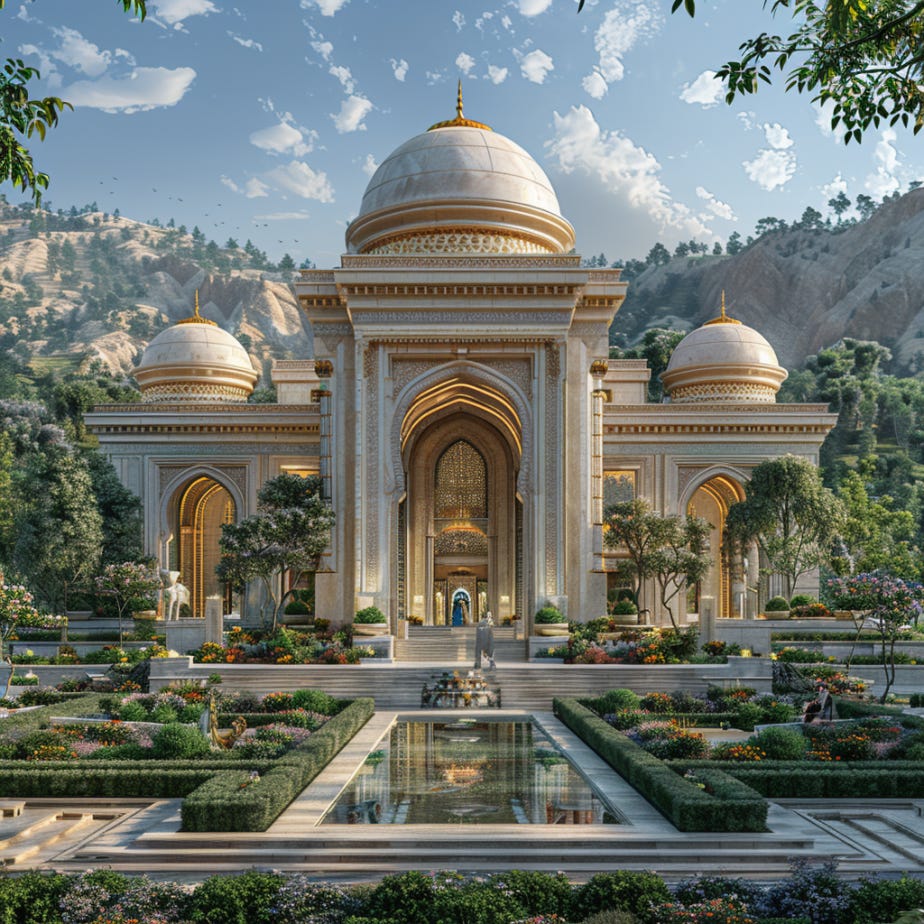
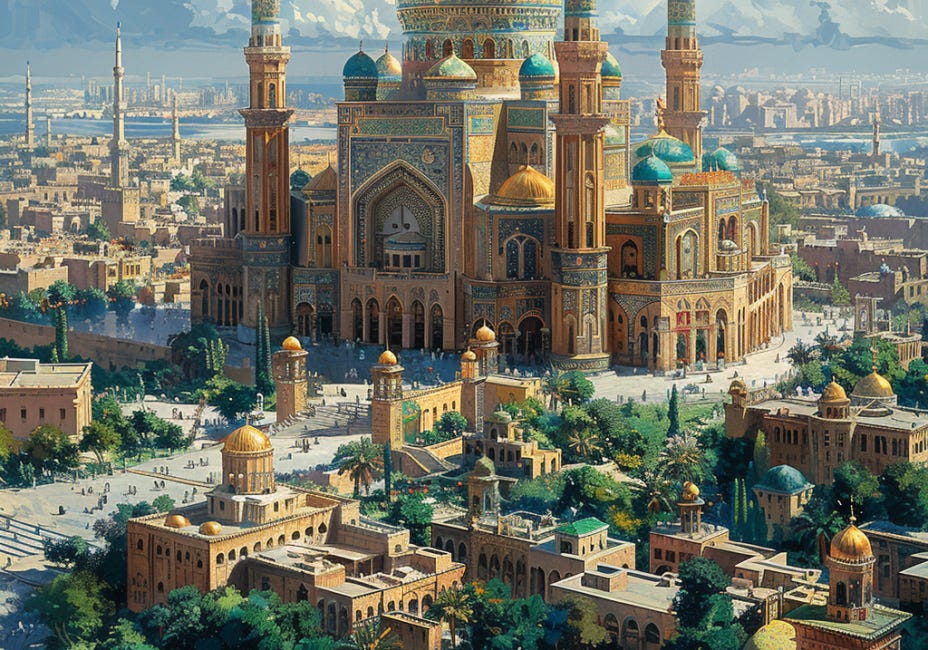
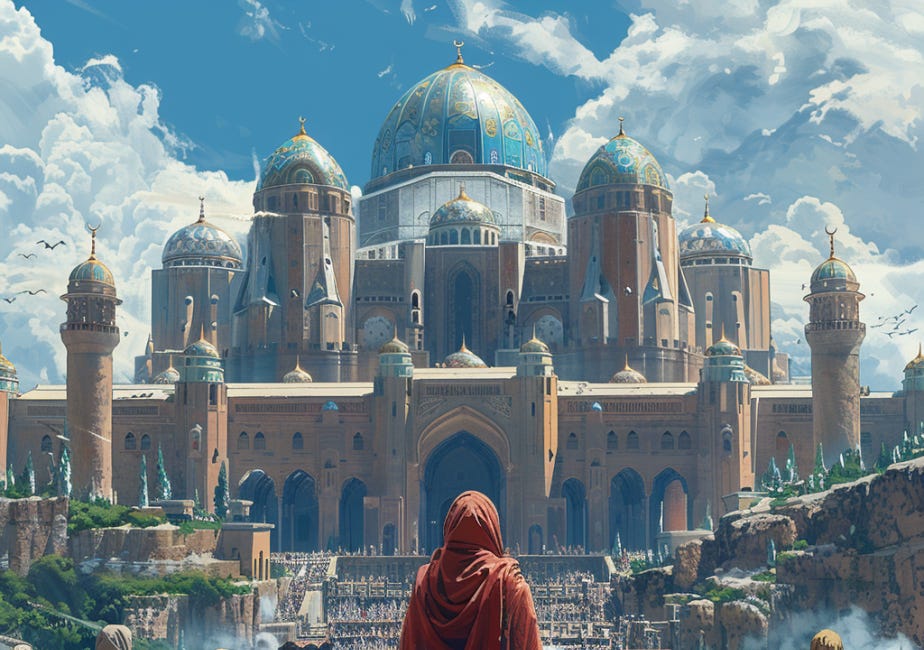
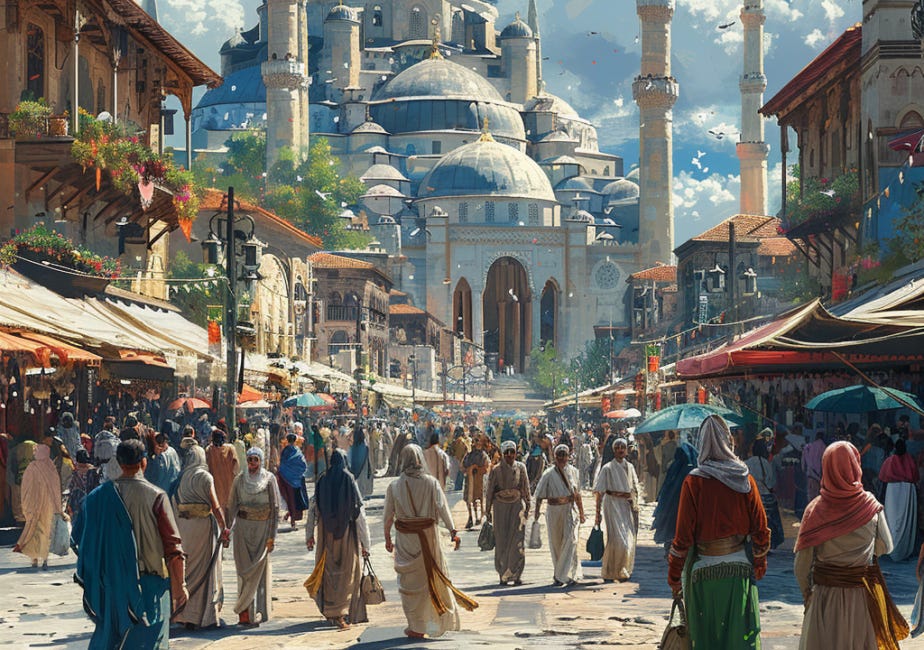

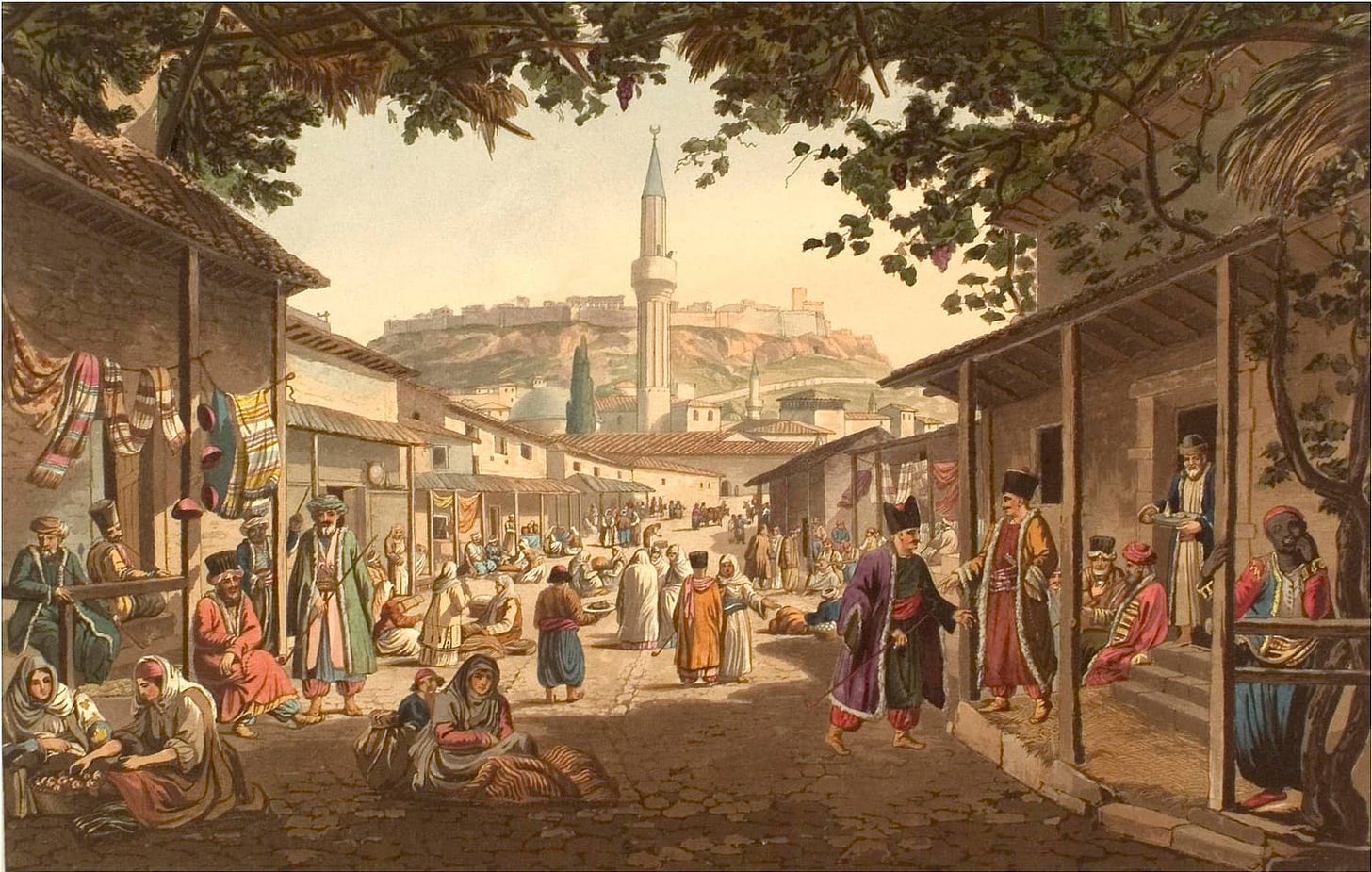
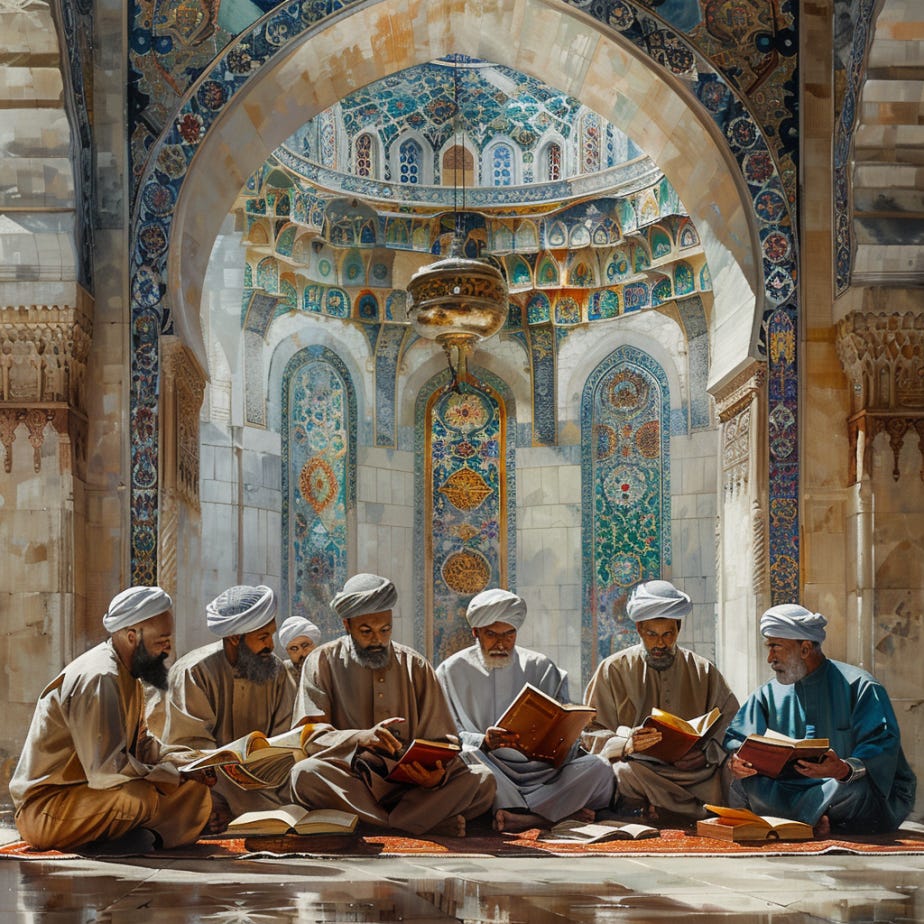
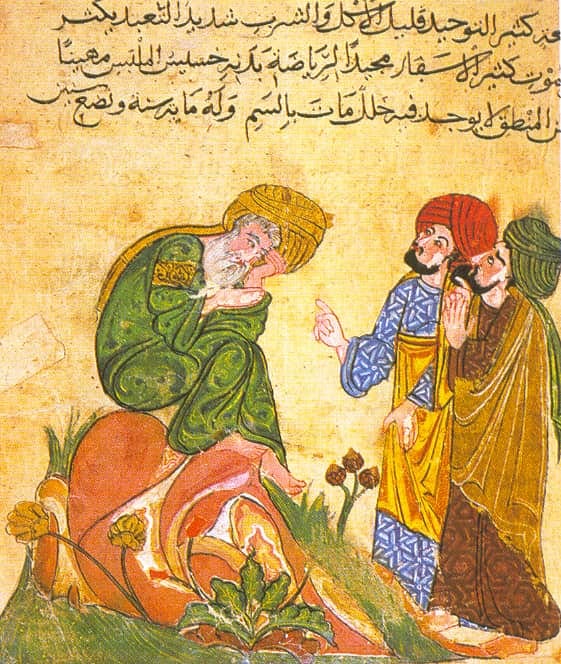
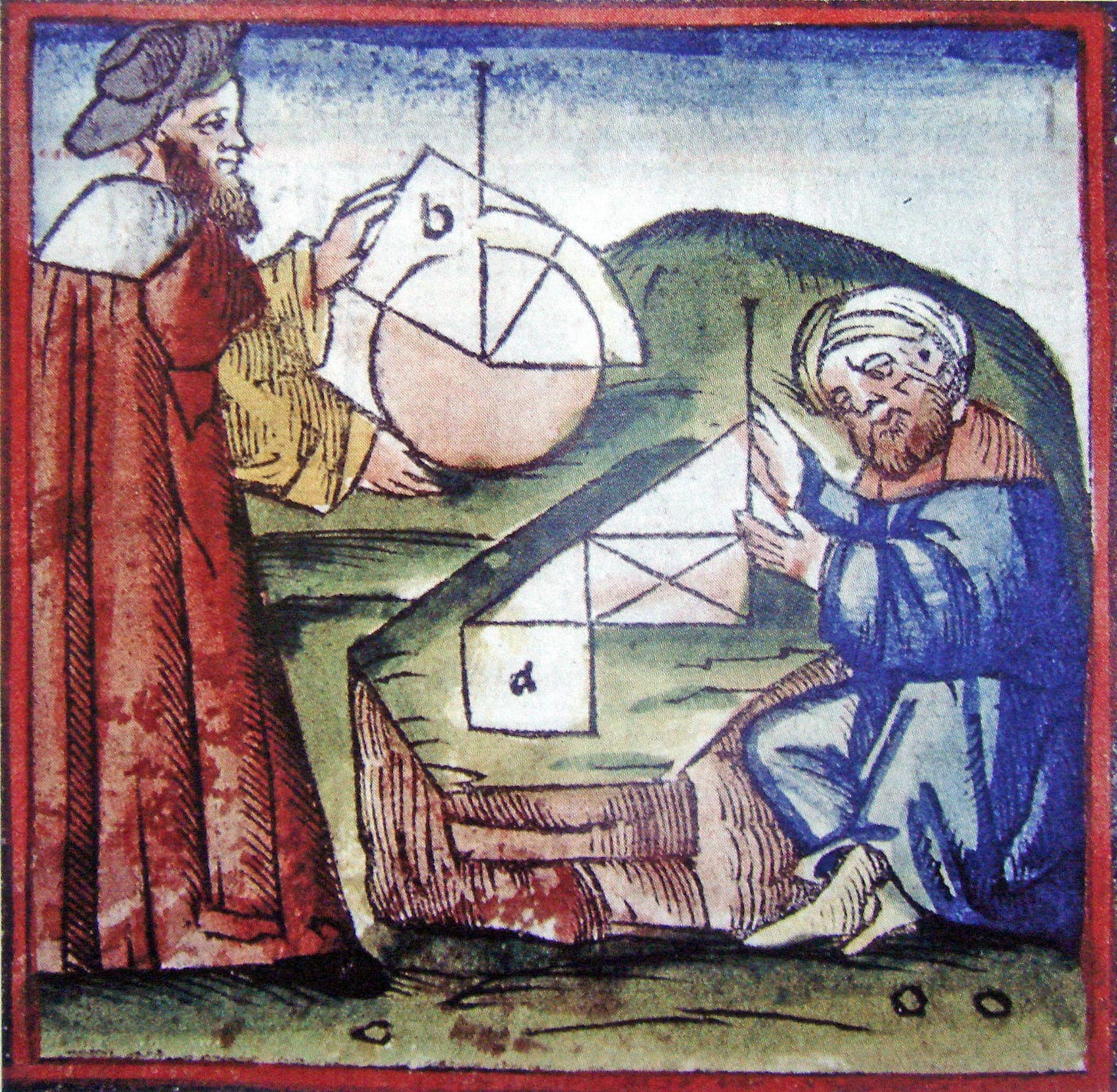
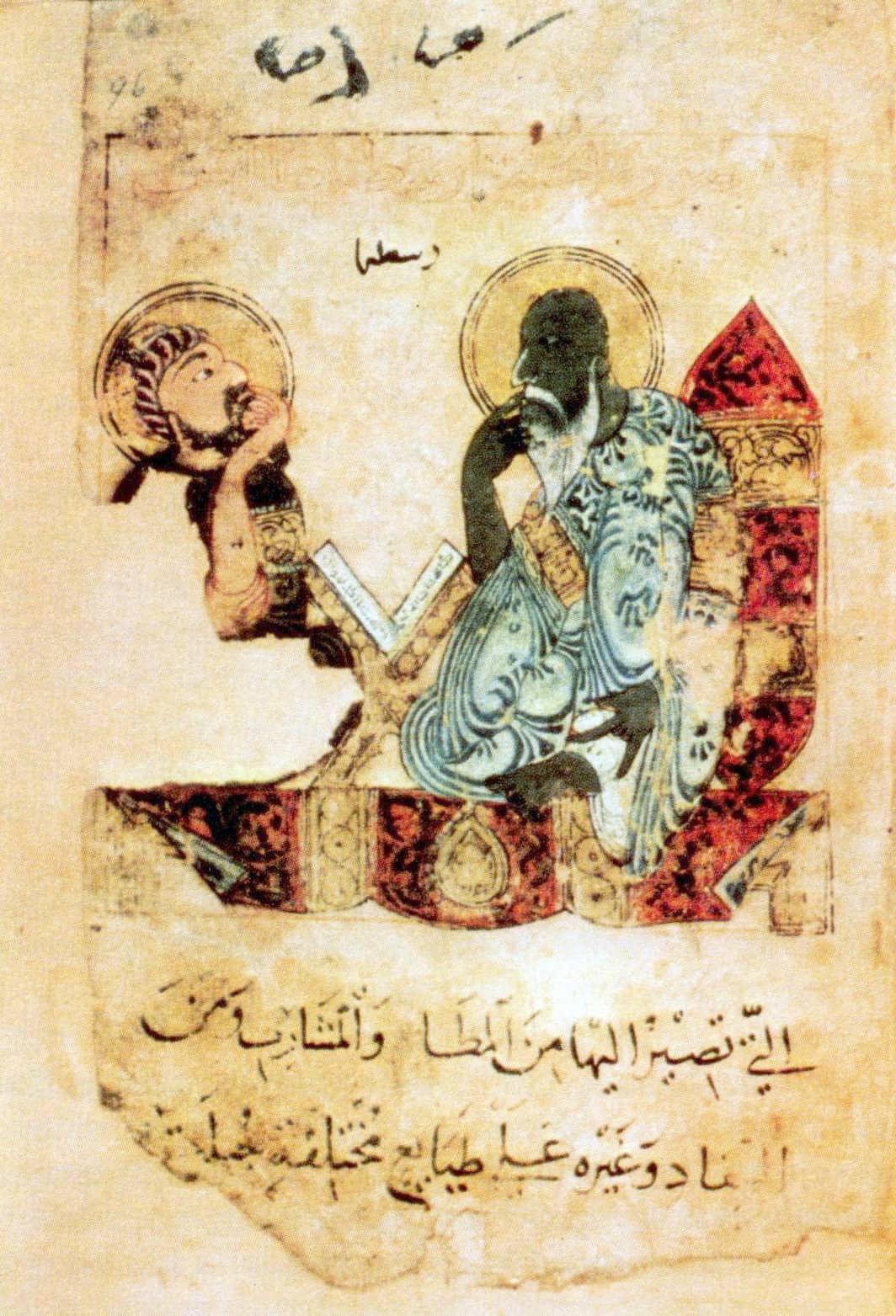
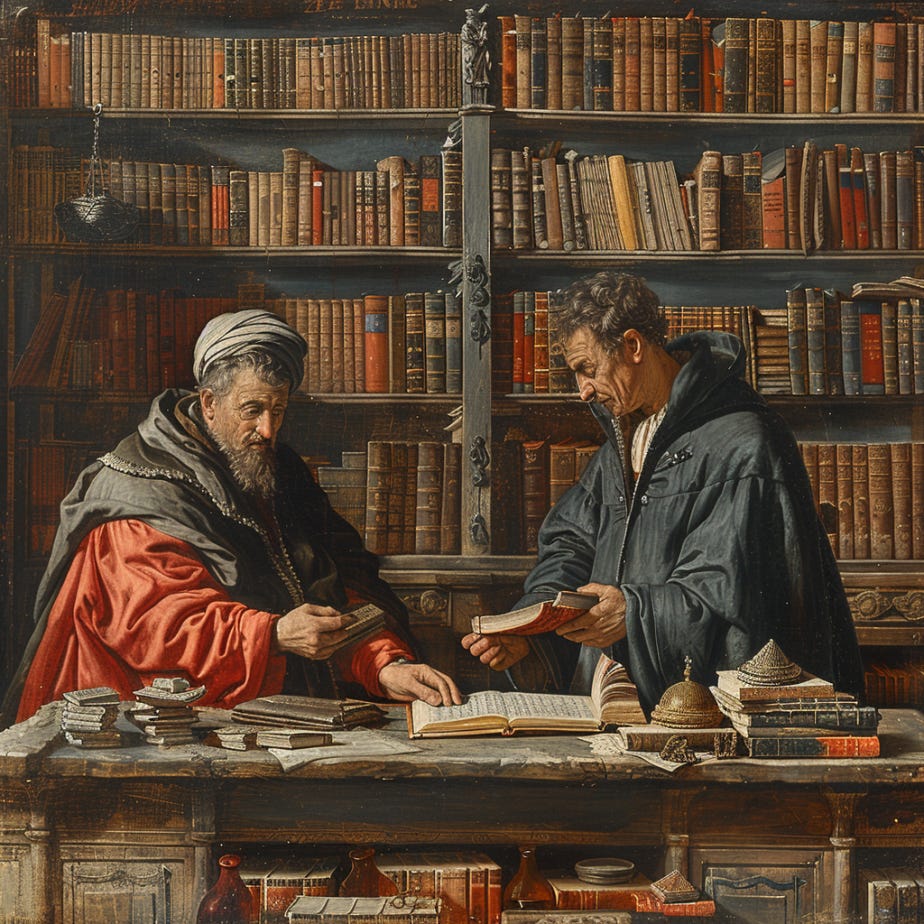
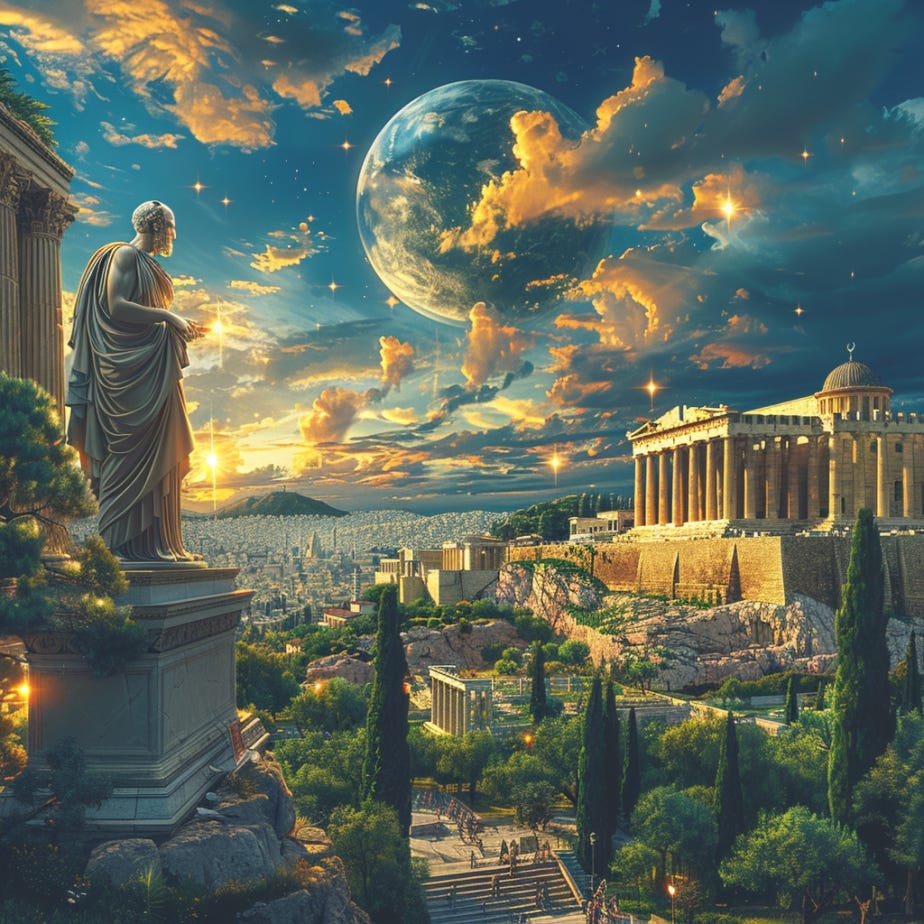
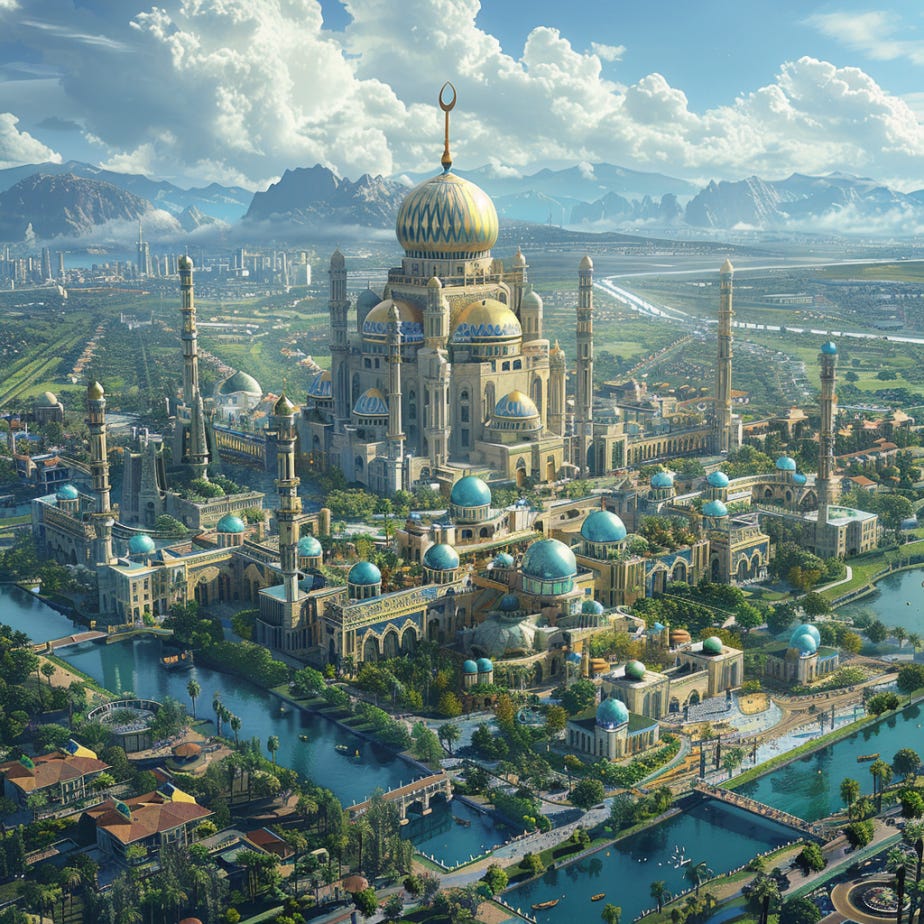
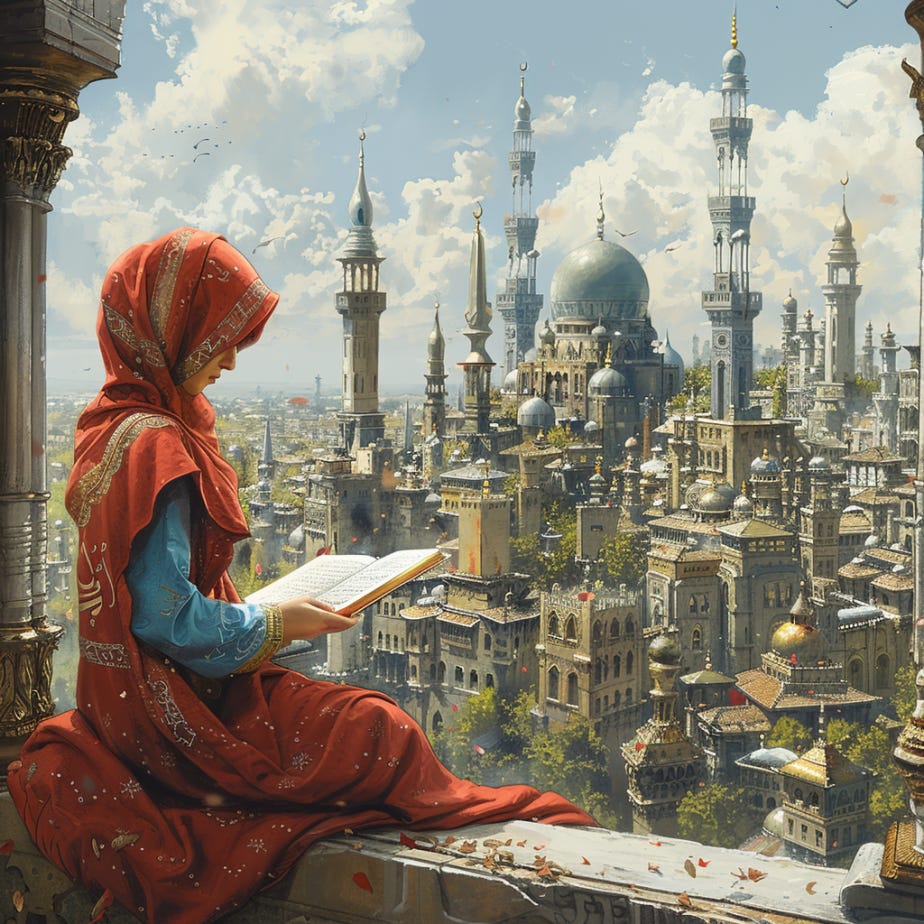
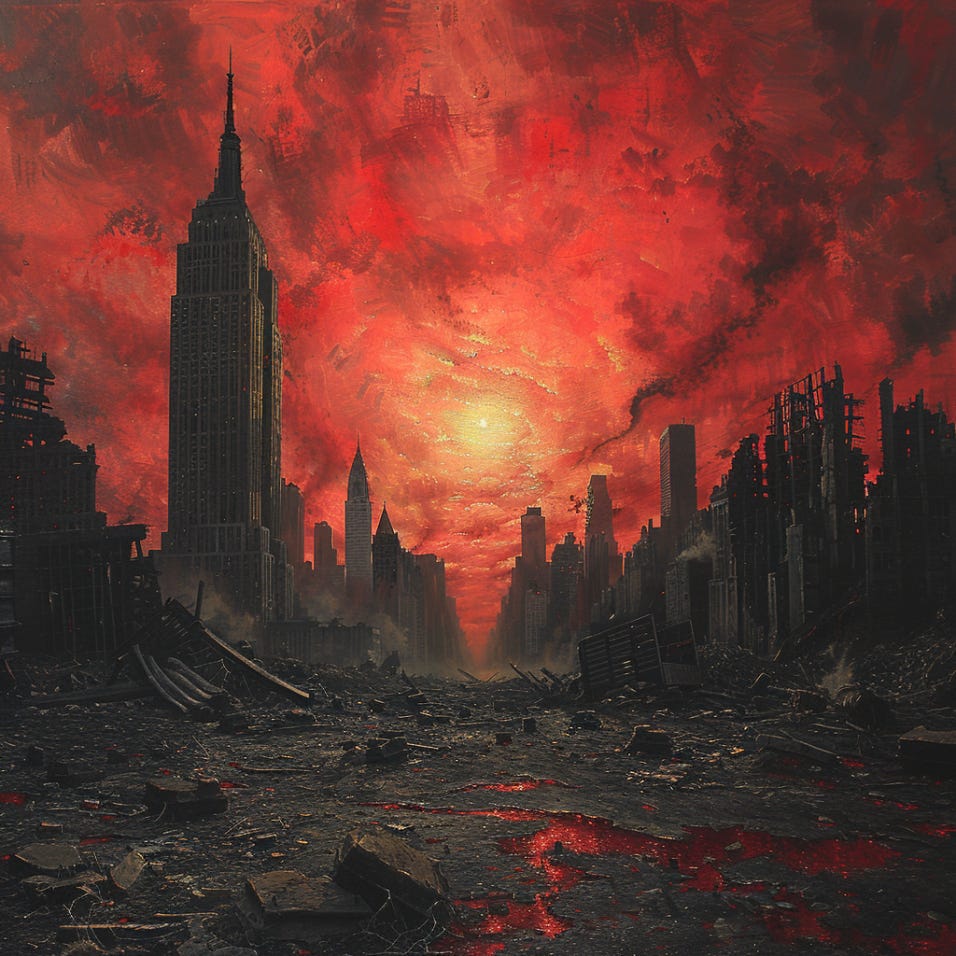

Thank you Ahnaf. I'm afraid I only listened with one ear, as I dozed through the heat of the afternoon, hoping to learn by osmosis. Enough seems to go in to reassure me that, if the future of the west is Islamic, then all may be well following the transition. God, knowledge, compassion, learning, sobriety, modesty... I wish I'd grown up in that west!
God bless you Sir. Many thanks. - Waiting eagerly for your Bangladesh article!!
Saved for later reading at a more quiet moment